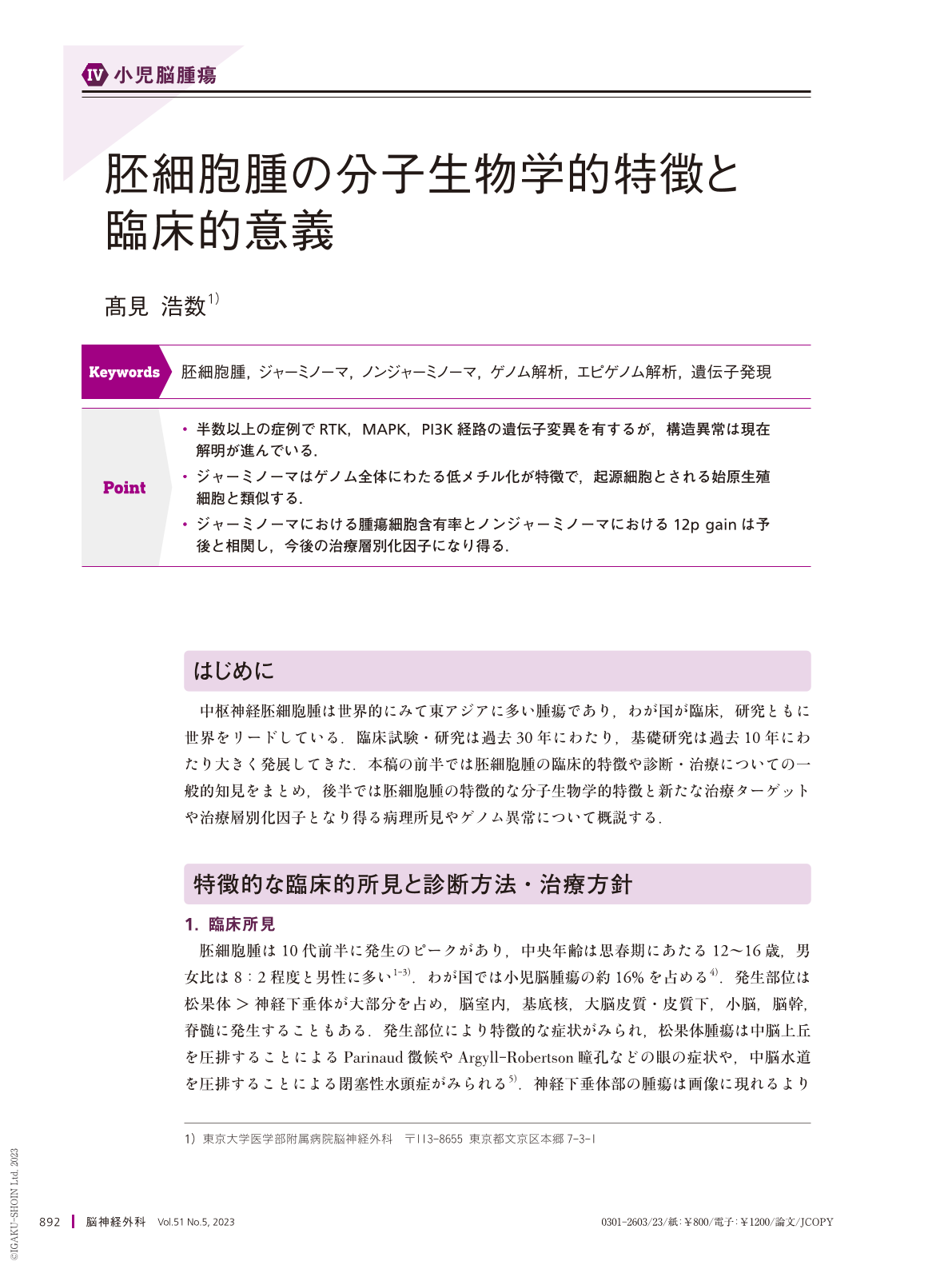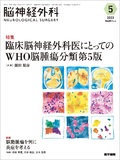Japanese
English
- 有料閲覧
- Abstract 文献概要
- 1ページ目 Look Inside
- 参考文献 Reference
Point
・半数以上の症例でRTK,MAPK,PI3K経路の遺伝子変異を有するが,構造異常は現在解明が進んでいる.
・ジャーミノーマはゲノム全体にわたる低メチル化が特徴で,起源細胞とされる始原生殖細胞と類似する.
・ジャーミノーマにおける腫瘍細胞含有率とノンジャーミノーマにおける12p gainは予後と相関し,今後の治療層別化因子になり得る.
Germ cell tumors(GCT), which predominantly emerge in the early to middle teenage years among males, affect the pineal gland, followed by the neurohypophysis, often presenting with site-specific symptoms. Diagnosis hinges on imaging, tumor markers(HCG and AFP), and pathological evaluation. The radiation dose/coverage and chemotherapy intensity are tailored to the distinction between the germinoma and non-germinoma types. Surgical resection is reserved for residual non-germinomas. Biological investigations have revealed frequent mutations in the RAS, MAPK, and PI3K pathways, with no obvious structural variations. These mutations are more prevalent in germinomas than in non-germinomas. Germinomas exhibit a strikingly low methylation status across the genome, mirroring the state of primordial germ cells(PGC), deemed as the cells of origin. Mitosis/meiosis-related genes are highly expressed in germinoma, which is another supporting evidence of PGCs as cells of origin. In contrast, non-germinomas display transcriptomic features that differentiate them into tissue formation and organogenesis. Frequent copy number alterations are another hallmark of GCTs. Among these, 12p gain has been identified as a negative prognostic factor in non-germinomas. Pathologically confirmed tumor cell content serves as a poor prognostic indicator in germinomas and requires external validation as a reliable marker. Given the significant long-term sequelae stemming from treatment burdens in vulnerable young patients, a need for targeted therapy has arisen. Ongoing genomic studies are exploring the pathogenesis and uncovering potential leads for the establishment of precision medicine.

Copyright © 2023, Igaku-Shoin Ltd. All rights reserved.


